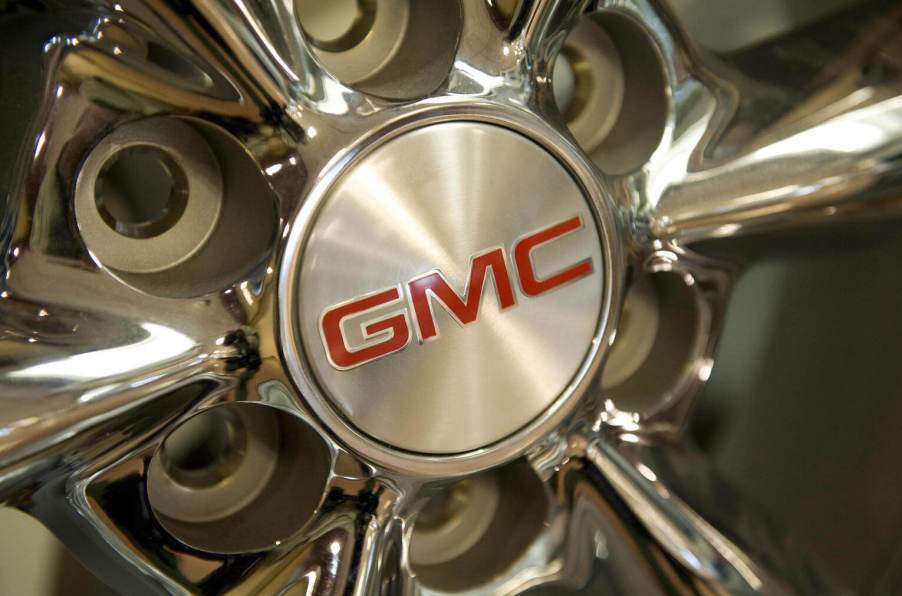
The GMC Typhoon Was Almost as Fast as an Acura NSX
The GMC Typhoon was arguably the first high-performance SUV. When it launched in 1991, SUVs were body-on-frame vehicles built on truck chassis to provide offroad capability and not the all-weather, go-everywhere performance vehicles we think of today. It was surprisingly fast and legitimately a very capable performance vehicle.
How fast was the Typhoon? Fast enough to give Ferraris, Porsches, and Corvettes a run for their money. Fast enough to blow the t-tops off most Mustangs, Camaros, and Trans Ams of the day. In fact, when you looked at the Typhoon’s performance specs, it was almost as fast as an Acura NSX from the same era.
Both the GMC Typhoon and Acura NSX upended the market

By the early 1990s, SUVs were becoming popular and more refined. With the launch of the Ford Explorer and Jeep Grand Cherokee, the public’s perception of SUVs changed. They were no longer rugged, go-anywhere vehicles with crude interiors. Instead, they offered a combination of all-weather capability with comfort and luxury.
The GMC Typhoon went further, hoping to inject excitement into the SUV market by adding performance. Starting with a turbocharged version of the GM 4.3-liter V6, GMC created an SUV that could run with many sports cars of the day while providing everyday practicality and room for four people.
At the same time the GMC Typhoon was blowing doors off muscle cars, the Acura NSX was upending the sports car market. Exotic cars of the 1980s and 1990s combined breathtaking looks with breathtaking performance. But as cars, they left a lot to be desired. For starters, they were temperamental, high maintenance, and cost serious money to maintain. Additionally, they were terrible to drive. Cramped, uncomfortable, with bad visibility, they were little more than expensive garage art.
The Acura NSX changed that. Suddenly there was an exotic car that looked beautiful and offered supercar performance but could be as docile as a Honda Accord. If you wonder why Ferrari started embracing ergonomics in the 1990s and Lamborghini’s build quality drastically improved, you have Acura to thank.
GMC Typhoon vs. Acura NSX: specs and performance
According to Car & Driver, the GMC Typhoon’s 4.3-liter generated 280 hp and 350 lb-ft of torque. It was capable of a 5.3-second 0-to-60 mph time and a quarter-mile run of 14.1 seconds at 95 mph. Equipped with ABS brakes, it stopped at just 185 feet from 70 mph. And when the roads got twisty, the Typhoon handled well with 0.79 g of cornering grip. Those numbers matched up well against a lot of sports cars of the era, shocking the sports car world.
The NSX also shocked the sports car world, taking first place in a Car & Driver comparison test against the Lotus Esprit, Ferrari 348, Corvette ZR-1, and Porsche 911. Its 3.0-liter V6 produced 270 horsepower using Honda’s revolutionary VTEC variable lift and timing mechanism. Lighter than the Typhoon, it hit 60 mph from a standstill in 5.2 seconds, reaching the quarter mile in 13.8 seconds at 102 mph. The only place it really beat the Typhoon was handling and braking. It stopped from 70 mph at 157 feet and provided 0.86g of road-holding grip.
Car & Driver summed up the 1991 NSX in its comparison: “Apart from the near-$60,000 price, there is no hardship to driving this car. Getting in and out is easy. The ride is fine. There are no bad noises. The climate control works flawlessly. You can have an automatic transmission and power steering if you want.”
The same can also be said for the GMC Typhoon. And while the NSX outperforms the Typhoon, it’s a hollow victory. You’d expect a mid-engine exotic car to trounce a truck, and it doesn’t.
The Acura NSX returned; hopefully, the Typhoon will too
The original Acura NSX stayed in production until 2005. Performance improved incrementally over the years, but the price increased from near-$60,000 to over $90,000. Sales dwindled, and Acura pulled the plug.
Then in 2016, Acura launched a new NSX with a 3.5-liter V6 and hybrid powertrain with three electric motors. Once again, it was a liveable supercar with performance on par with the Porsche 918 and Ferrari La Ferrari, but at a fraction of the price.
The GMC Typhoon only lasted two years and sold less than 5,000 units. But looking at all of the performance SUVs that followed it, including vehicles like the Porsche Cayenne and Jeep Grand Cherokee SRT8, you have to wonder why it hasn’t made a comeback like the Acura NSX. The idea makes too much sense to ignore.



